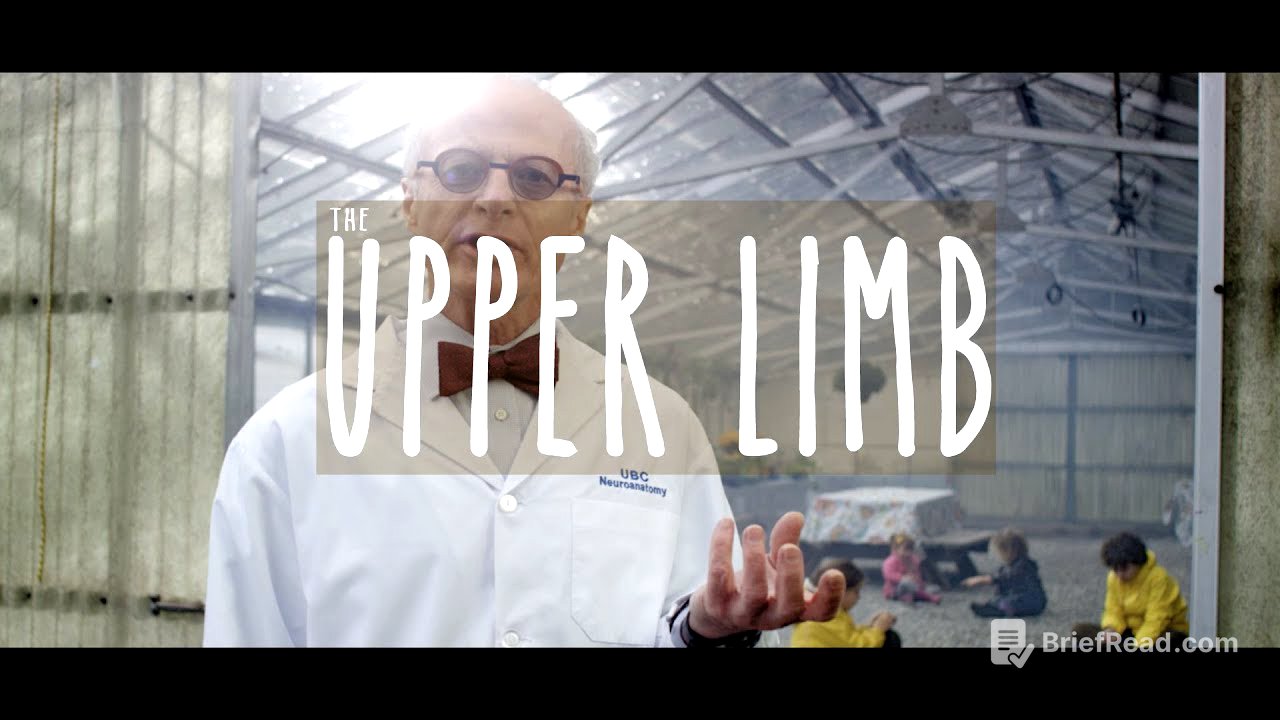TLDR;
This video explores the anatomy and function of the human upper limb, highlighting its unique features that have contributed to our dominance as a species. The video focuses on the shoulder, elbow, wrist, and hand, explaining how their structure and muscle groups enable us to perform a wide range of movements, from powerful actions to delicate precision. The video emphasizes the importance of the opposable thumb and its role in our ability to manipulate objects and create.
- The human upper limb is uniquely adapted for tool use and manipulation, combining a powerful brain with a specialized upper limb.
- The shoulder joint provides a wide range of motion, while the elbow allows for flexion, extension, pronation, and supination.
- The wrist provides stability and precision, while the hand is capable of both powerful and delicate movements.
- The opposable thumb is a key feature that allows for a wide range of grasping and manipulation abilities.
Shoulder Joint [1:15]
This chapter focuses on the shoulder joint, explaining its anatomy and how it allows for a wide range of motion. The shoulder joint is formed by the articulation of the scapula (shoulder blade) and the humerus (upper arm bone). The scapula is not anchored to the vertebral column, allowing for greater mobility and a wider range of motion. The shoulder joint is stabilized by muscles, including the rotator cuff muscles, which provide rotation and stability. The rotator cuff muscles are: supraspinatus, infraspinatus, teres minor, and subscapularis.
Elbow Joint [3:36]
This chapter focuses on the elbow joint, explaining its anatomy and how it allows for flexion, extension, pronation, and supination. The elbow joint is formed by the articulation of the humerus, radius, and ulna. Flexion and extension occur between the bones of the forearm and the humerus. Flexion is primarily provided by the brachialis and biceps muscles, while extension is provided by the triceps muscle. Pronation and supination are movements that rotate the hand. Pronation is mediated by the pronator teres and pronator quadratus muscles, while supination is primarily provided by the biceps and supinator muscles.
Wrist Joint [5:47]
This chapter focuses on the wrist joint, explaining its anatomy and how it provides stability and precision for hand movements. The wrist joint is formed by the articulation of the radius and the carpal bones of the hand. The wrist is stabilized by five muscles that allow for side-to-side movements. These muscles include the flexor carpi ulnaris, extensor carpi ulnaris, flexor carpi radialis, extensor carpi radialis longus, and extensor carpi radialis brevis.
Hand [7:26]
This chapter focuses on the hand, explaining its anatomy and how it allows for both powerful and delicate movements. The hand is capable of powerful movements due to the tendons of large muscles in the forearm that extend into the hand and attach to the bones of the fingers and thumb. However, the hand also performs delicate movements due to small muscles located within the hand itself. These small muscles modify the movements generated by the larger muscles of the forearm, making them more precise. The lumbrical muscles are a unique example of these small muscles, allowing for a combination of extension and flexion. Other muscles in the hand, such as the interossei, abduct and adduct the fingers.
Opposable Thumb [9:44]
This chapter focuses on the opposable thumb, explaining its anatomy and how it contributes to our ability to manipulate objects. The thumb has a specialized set of muscles that allow it to oppose the other fingers, rotate, abduct, and adduct. This dexterity and opposed ability is a key factor in our dominance as a species, allowing us to manipulate objects and create tools.
